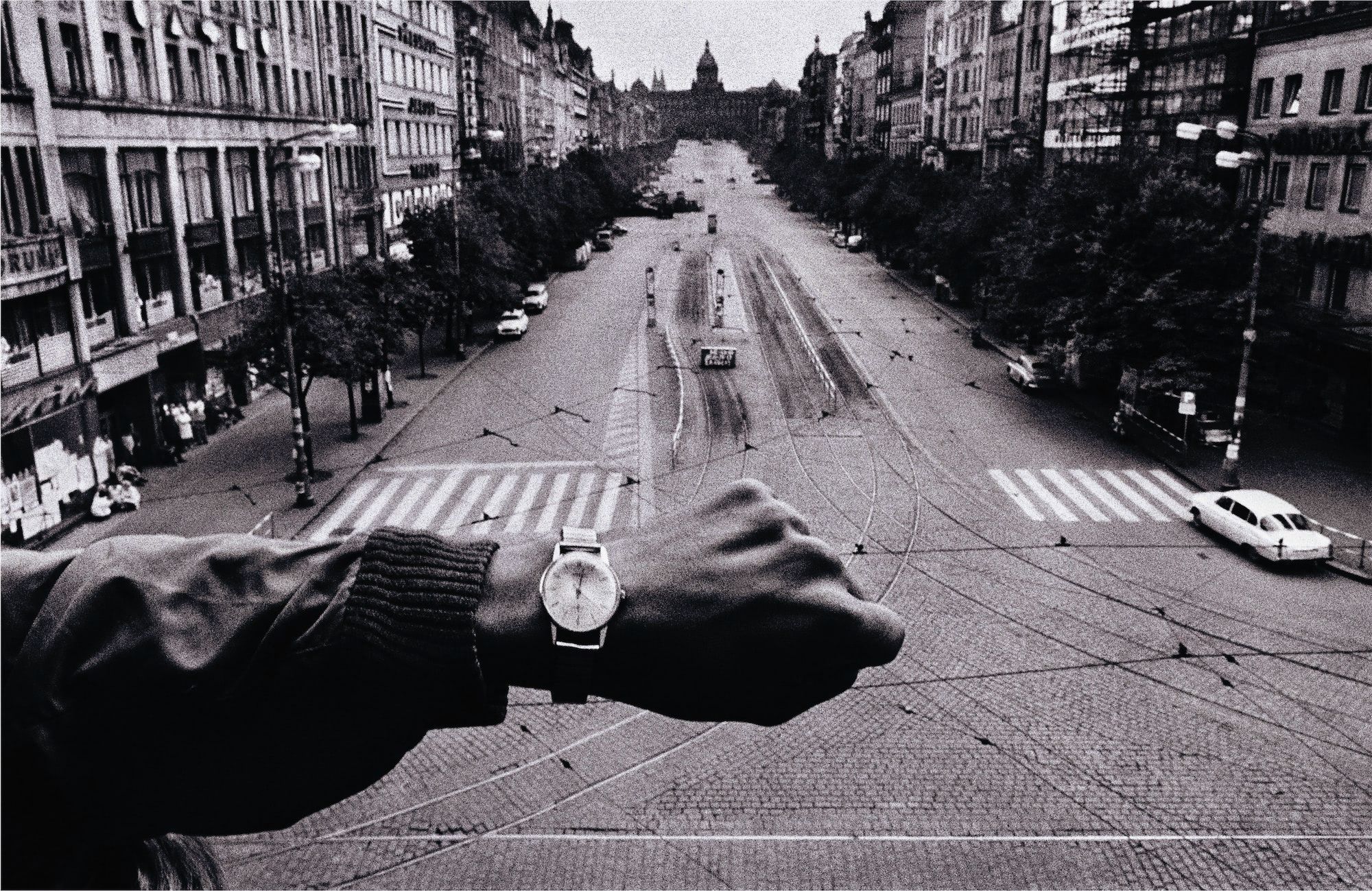Fake Can’t be Just As Good
July 10, 2023 Photography Generative AI Film Authenticity Vilém Flusser
 Josef Koudelka, Prague 1968. His juxtaposition of time and world events cuts deep.
Josef Koudelka, Prague 1968. His juxtaposition of time and world events cuts deep.
Curiously, I once managed to snatch a job at a photo company without having heard about the decisive moment. Maybe that’s the genius of Cartier-Bresson’s famous dictum: It names a conundrum that any photographer is naturally familiar with; namely when to press the shutter.
We all agree that photography can be art, even if the act of creation happens by a machine, by operating a camera. That’s because what turns depiction into art isn’t the motif or the process but the photographer’s vision.
When I wrote about it later, I tried to come to terms with the uniqueness a moment bestows on a photo:
Because what Cartier-Bresson said is really quite philosophical: For any picture to be taken, all the light, people and colors in the frame need to be arranged in space just the way they are. Each photo is the result not just of the photographer but of all the objects in it moving through four dimensions: through both space and time.
I’ve been thinking about this again in the context of the flood of AI-generated images and the question of whether they constitute art. Is a unique prompt “enough” to qualify a machine-generated output as a piece of art?
It certainly takes creativity to come up with prompts and to think beyond the constraints of the physical world, of time and space. Is it all that different from pressing a shutter on a camera?
I think it is. AI has the problem that there is no decisive moment, there are no constraints apart from the models’ capabilities, which are improving all the time.
What makes fully generated images so different from photography is that there’s no work involved in matching up time, space, people (or even film stock1). AI can be all powerful, but that also turns it arbitrary and the resulting images are ultimately forgettable. If the limits aren’t there, there’s no achievement in having overcome them.
I’m not writing this to be dogmatic about limits; they aren’t important for their own sake. But embracing constraints is a good thing! Seeing how a photographer overcomes the limits of the real world gives us insights into how their mind works; and what makes them creative.
On The Land Behind podcast I heard a quote from the philosopher Vilém Flusser:
All too often when we think about the function of the lens we tend to privilege the visible world which lies before it at the cost of concealing the consciousness which operates the camera from behind.
Photography might rely on a machine, but what makes the results meaningful are the human experiences behind the camera—which is something AI can’t ever have.
I didn’t quite account for film before, but it absolutely determines the look of a photo—and it is one of the reasons why digital images sometimes feel less unique. It’s not that anything can be turned into anything else, but manipulation can be done much more heavily, across the “feeling boundary” that I’ve previously mentioned, and it is something that’s making me—a chief digital apologist—reconsider if uniqueness truly exists in the realm of digital photography↩︎